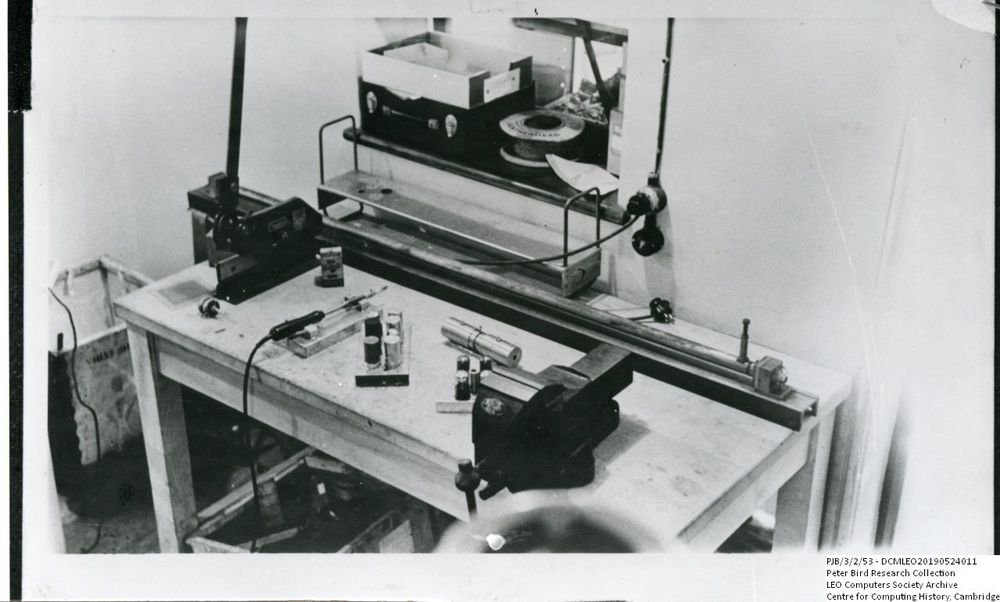
| Home > LEO Computers > Lyons Electronic Office (LEO) Archive > CMLEO/PB - Peter Bird Collection > CMLEO/PB/PH Photographs > Photographs of LEO I > 60734 Experimental Delay Tube |
60734 Experimental Delay Tube
|
Description of Photograph Photograph of an experimental mercury delay tube on the bench at St Mary's College (Cadby Hall) in 1949. The mercury delay line became a crucial element of the LEO I system. Published in Bird, Peter LEO - The First Business Computer (Wokingham: Hasler, 1994), plate 15.
Research comments: Mercury delay line storage had been employed by the Cambridge EDSAC as an early form of computer 'memory' and the LEO machine used it too. The idea had been patented by J. Presper Eckert in 1947. In essence, the delay line stores information by continuously passing information through the mercury in the form of electronic pulses. The length of the delay line determines the amount of information that can be 'stored' in it. Unfortunately mercury is heavy, expensive and toxic and it must be kept at a constant temperature in order to work as expected. But at this time mercury delay lines were the only available form of 'fast' storage. LEO used both long and short delay lines; short delay lines, similar to the one pictured here, could store 17 bits. LEO eventually had twice the memory size of EDSAC. The reference to St Mary's College relates to the Roman Catholic seminary and training college building that J. Lyons & Co purchased, along with various other buildings in the immediate vicinity, in 1925 to form part of their Cadby Hall headquarters. (LM)
Provenance Date: 1949 Physical Description: 1 photographic print; black and white Archives Hub References: CMLEO/PB/PH/1/60734 PJB/3/2/053 Other References: DCMLEO20190524011 Comment on This Photograph This exhibit has a reference ID of CH60734. Please quote this reference ID in any communication with the Centre for Computing History. |










